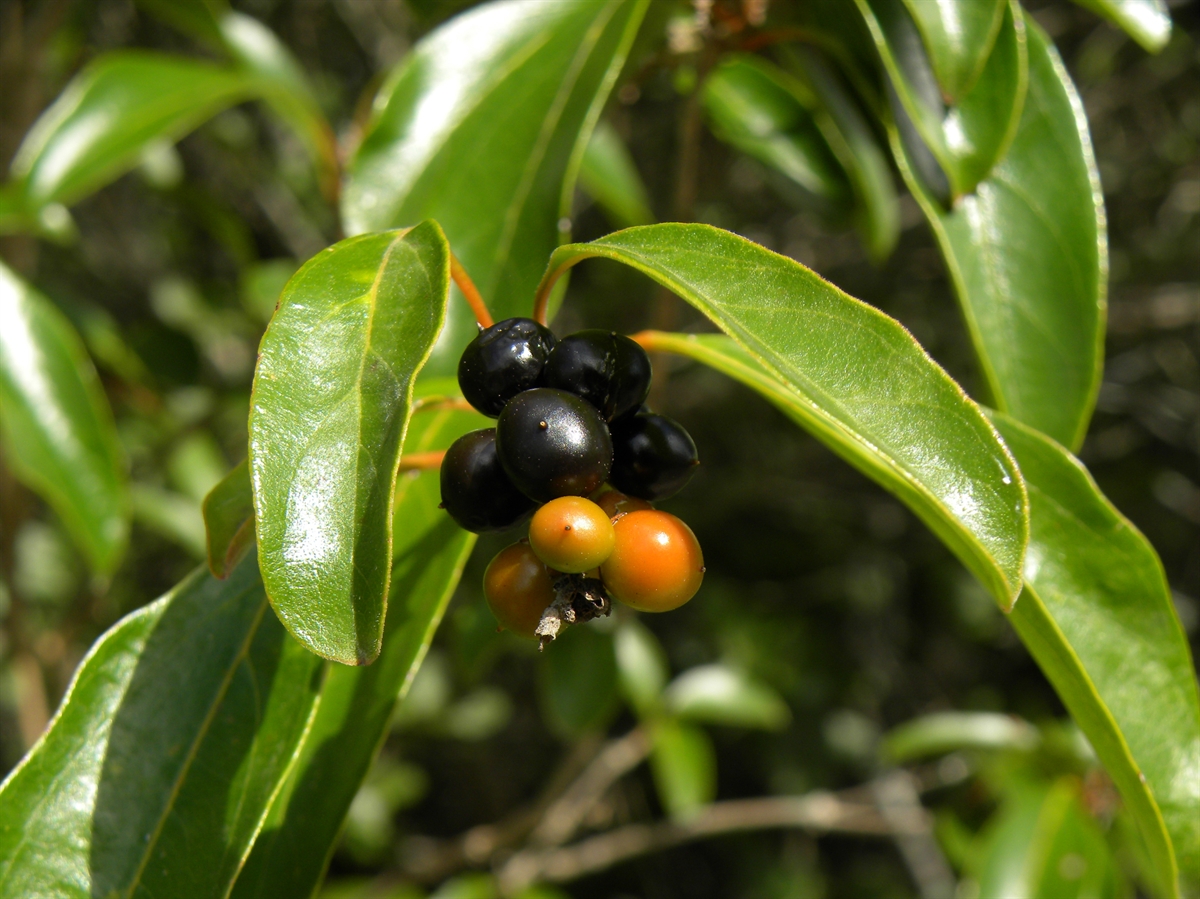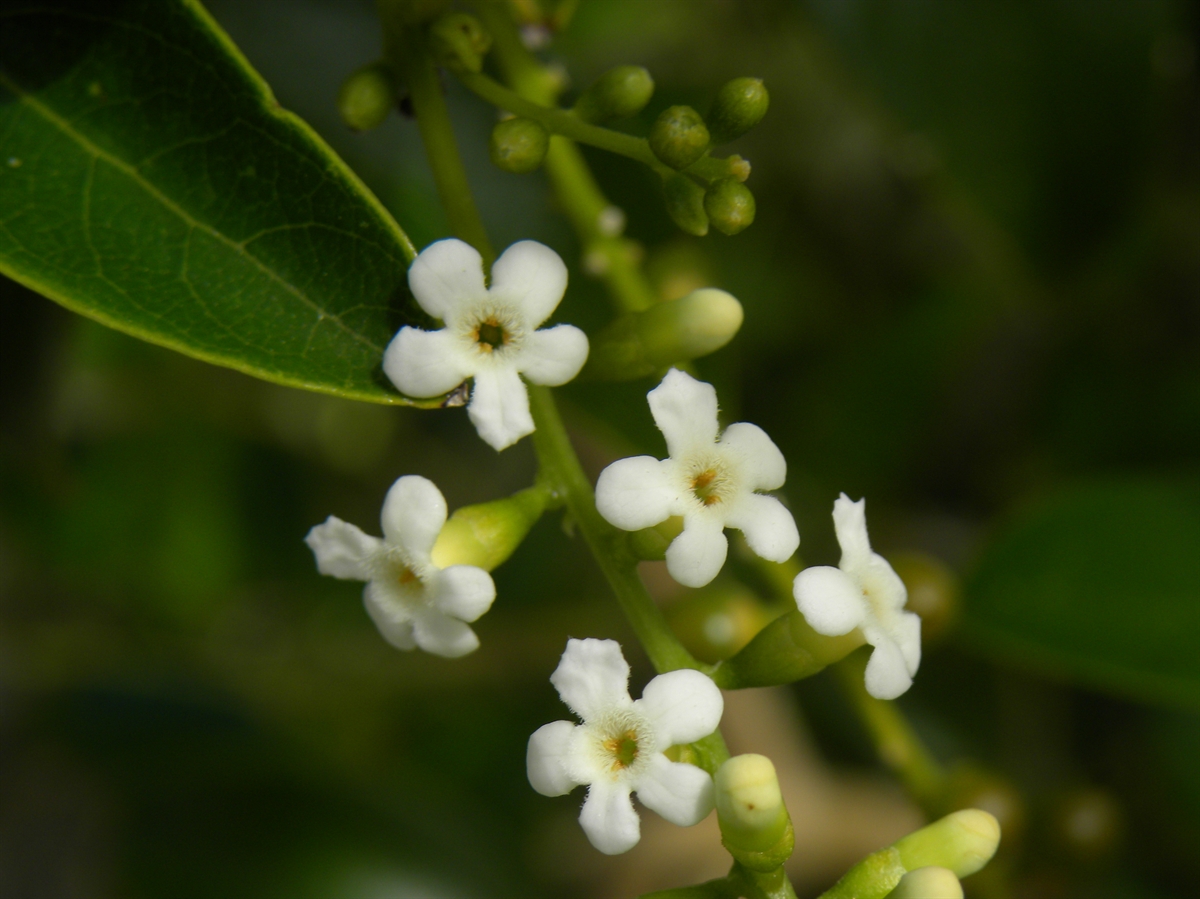Habit: Citharexylum spinosum grows as a large shrub to medium size tree up to 11 meters in height and to 25 cm in diameter. The leaves are arranged oppositely, are lanceolate to oblanceolate, and to 15 cm in length. The leaf apex is acute or emarginate, the margin is entire and the petiole and lower midrib are a distinctive orange color.
The complete, prefect, zygomorphic flowers are arranged in racemes. The calyx has 5 fused green sepals. The corolla has 5 fused, white petals with hairs at the mouth. There are 5 stamens fused to the mouth of the corolla. The ovary is superior with 4 locules. The fruit is a few seeded berry that turns orange and eventually black at maturity.
Habitat: Citharexylum spinosum grows in Dry Broadleaf Evergreen Formation Forests/Shrublands (coppice).
Distribution: Citharexylum spinosum occurs on all island groups within the Lucayan Archipelago as well as the Caribbean region and the northern portions of South America.
Medicinal/Cultural/Economic usage: Citharexylum spinosum is used in the Bahamas to treat gastrointestinal issues (indigestion) as well as fatigue. In the Turks and Caicos Citharexylum spinosum is mixed with Thounia discolor (Three Finger) and Bourreria succulenta (Strong Back) to treat infants with swollen feet and sores.
It is used elsewhere in the Caribbean region for bathing as well as in combination with Ricinus communis (Castor bean) for poultices. The wood has been used to make musical instruments.
Citharexylum spinosum is used in the horticultural industry.


